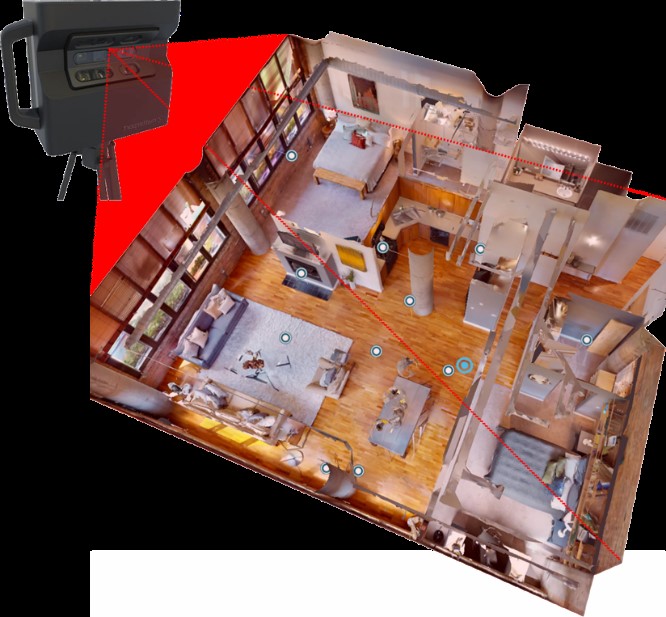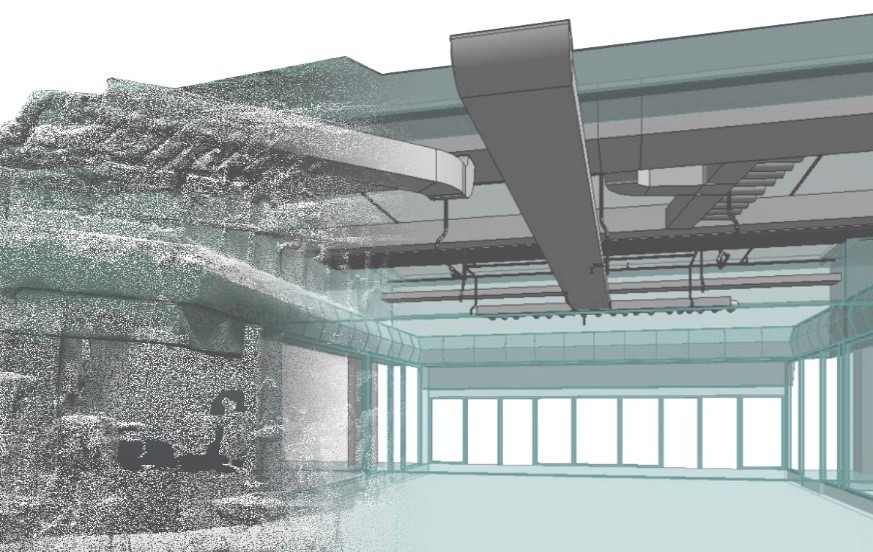AUTORE: Giovanni Ganci
TUTORS: Eng. Alessandro Zichi, Arch. Mohamed Elagiry
TIROCINIO: R2M Solution S.r.l.
MASTER: Master in “BIM Manager” a.a 2019/20
Il settore delle costruzioni sta vivendo una fase di rinnovamento digitale, dovuta alla necessità di gestire una sempre maggiore quantità di dati richiesti durante l’elaborazione di un progetto. Nell’ultimo ventennio sono state investite molte risorse nella ricerca di un metodo che semplifichi la gestione di questi dati e aumenti l’interoperabilità tra le figure coinvolte. Tra le metodologie in fase di sperimentazione e di implementazione più annoverate riconosciamo il BIM (Building Information Modelling), la quale risulta essere la più sviluppata ed adottata dagli specialisti del settore negli ultimi anni. Il BIM si basa sull’utilizzo di modelli 3D in grado di fornire informazioni utili riguardanti l’intero ciclo di vita del fabbricato, dalla progettazione alla costruzione fino al mantenimento e demolizione dello stesso. La Metodologia BIM accomuna tutti gli scenari possibili del settore delle costruzioni, da quello infrastrutturale a quello delle strutture sanitarie, commerciali e residenziali, che siano nuove costruzioni o edilizia esistente. In funzione delle caratteristiche del progetto si può infatti decidere di applicare la metodologia BIM utilizzando strumenti differenti. Nel caso di edifici esistenti, si potrebbe pensare di utilizzare strumenti di rilievo in grado di riprodurre un gemello digitale (Digital Twin), al quale associare una serie di dati riferiti alla manutenzione, all’efficienza energetica, alla dismissione, ecc, mentre per una nuova costruzione, si potrebbe pensare di adottare il BIM già dalle fasi iniziali. In Italia, considerato l’importante patrimonio di edilizia storica presente, sarebbe interessante pensare di poterne gestire l’eredità attraverso l’integrazione della metodologia BIM. Per tale motivo la ricerca è oggi orientata sullo studio di nuovi strumenti, che hanno come obiettivo quello di raccogliere dati storici, fisici e geometrici, al fine di prolungare e migliorare l’utilizzo del patrimonio edilizio esistente. Tra questi strumenti riconosciamo lo Scan to BIM, ritenuto dai tecnici coinvolti in progetti di riqualificazione, restauro e ristrutturazione, un primo passo verso una gestione digitalizzata delle strutture esistenti. Lo Scan to BIM si basa sull’utilizzo delle recenti tecnologie per convertire i dati rilevati, sottoforma di modelli navigabili interattivi e/o nuvole di punti, in modelli BIM tridimensionali, detti gemelli digitali, con lo scopo di generare un ricco database utile per coordinare preventivamente tutti gli interventi da eseguire e per programmare al meglio il mantenimento e l’utilizzo delle strutture.
FOR FOREIGN STUDENTS:
The construction sector is going through a phase of digital revolution, due to an increasing amount of data management required during the development of a project. Over the last twenty years, great extent of resources has been invested to explore methods that simplifies the data management and increases interoperability between the actors involved. Among all the methodologies being tested and implemented BIM (Building Information Modeling) is one of the most widely recognized, in fact is the methodology most developed and adopted by specialists in the filed over the last few years. BIM is based on the use of 3D models capable of providing useful information regarding the entire life cycle of the building, from design and construction to maintenance and demolition. BIM methodology combines all the possible scenarios of the construction sector, from infrastructural to that of healthcare, commercial and residential structures, whether they are new constructions or existing buildings. Depending on the project characteristics, it is possible to decide to apply the BIM methodology using different tools. In case of existing buildings, it could be possible to use survey tools capable of recreating a digital twin, and to embed data referring to maintenance, energy efficiency, decommissioning etc., while for a new construction, BIM can be used from the early stages. Italy has an important historical building heritage; therefore, it would be interesting to think of managing its legacy through the integration of BIM methodology. For this reason, research is now focused studying new, which aims to collect historical, physical, and geometric data, in order to extend and improve the use of existing building heritage. Scan to BIM is one of these tools, considered as a first step towards a digitalized management of existing structures by the technicians involved in redevelopment, restoration, and renovation projects. Scan to BIM is based on the use of recent technologies to convert the data collected, in the form of interactive navigable models and / or point clouds, into three-dimensional BIM models, called digital twins, with the aim of generating a rich database useful to coordinate in advance all the interventions and to better plan the maintenance and use of the structures.


